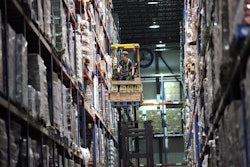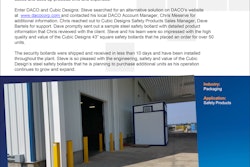Last year, on November 11, 2014—Singles’ Day (11.11) in China—consumers spent $9.3 billion at Alibaba’s online marketplaces, Taobao and Tmall—within just 24 hours. Here are a few other stats from that day, according to Alibaba:
- 42.6 percent of purchases, by spend, were placed on mobile phones or tablets.
- Alibaba generated 278.5 million packages across its 30,000 on-site merchants.
Singles’ Day is the biggest online shopping day in China—and the world for that matter. According to TECHINASIA, what started as a local college campus tradition 25 years ago evolved into a national holiday. Research indicates that, by 2020, China will have 25 million more men than women. This provided an eye-opening opportunity for a retailer like Alibaba to monetize the holiday and turn it into the official online shopping day for millions of singles. In 2009, Alibaba introduced the first Singles’ Day online sale. In 2010, the promotions and consumer response grew. The popularity of the promotion practically doubled annually, with Singles’ Day sales reaching $3 billion in 2012, $5.8 billion in 2013 and $8.5 billion in 2014.
So what’s the new twist for 2015’s biggest online shopping day? Ironically, the big move is toward brick-and-mortar stores. Alibaba posted on its blog:
“During a press conference today in Beijing, Alibaba Group President of China Retail Marketplaces Jeff Zhang said the company hopes to use the 11.11 festival—the largest online shopping sale in the world—to encourage brands and retailers [to] make the transition from traditional to omnichannel retailing by combining the strengths of the online and offline shopping experiences.”
It goes on to say:
“Omnichannel retailing is one key underlying theme for this year’s 11.11 Global Shopping Festival, which also marks the first step in achieving the full integration of the digital economy and physical commerce,” Zhang said. “For traditional retail businesses, this presents an opportunity to embark on omnichannel sales, and embrace the integration of online and offline resources. The always-on interactivity of the e-channel promises to "bring new value to traditional businesses."
“Some 180,000 stores in 330 cities across China, representing more than a thousand brands, will employ a variety of omnichannel strategies during the 11.11 festival this year to make shopping more convenient and rewarding, whether consumers are shopping online, in physical stores, or both according to Alibaba.”
This is no small undertaking. Retailers are struggling today to meet consumer demand in an omnichannel environment. In fact, a new study out this month from RSR Research finds that retailers will continue to struggle indefinitely to keep up with omnichannel consumers:
“Consumers have fundamentally broken the serial nature of the retail model with their new digitally enabled and increasingly mobile shopping patterns. In the past, each and every transaction began and ended in one channel or another—but that is patently no longer true. In response (as you will see later in the report), retailers have accepted that they must offer some form of cross-channel order fulfillment to their customers. But the processes and technologies they employ to optimize the profitability of activities across channels are far away from being truly enabled, let alone optimized.”
Leading into the winter holiday season, there is concern about the ability to deliver and fulfill customer orders on time, while remaining profitable. Picture a holiday shopping rush the size of Singles’ Day burdening down on retailers’ back-end systems to support omnichannel business. On the surface, it looks like it could be a recipe for disaster. Keep a close eye on news about Alibaba—and from Chinese consumers—on November 12. This may be a good indicator of what’s in store for the upcoming holidays. It will also provide a barometer of omnichannel readiness in 2015 and how prepared retailers are to enter into a new year.



















